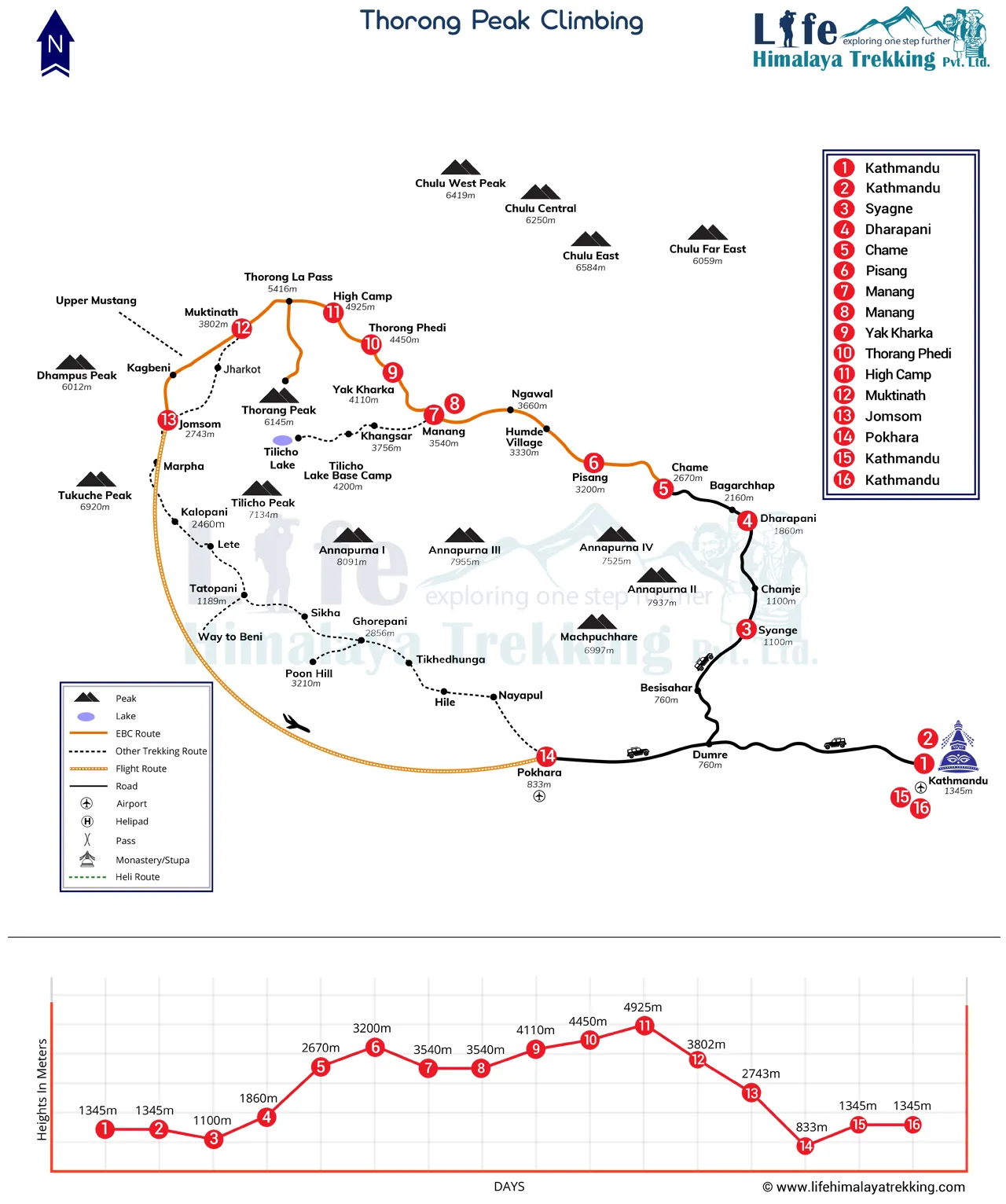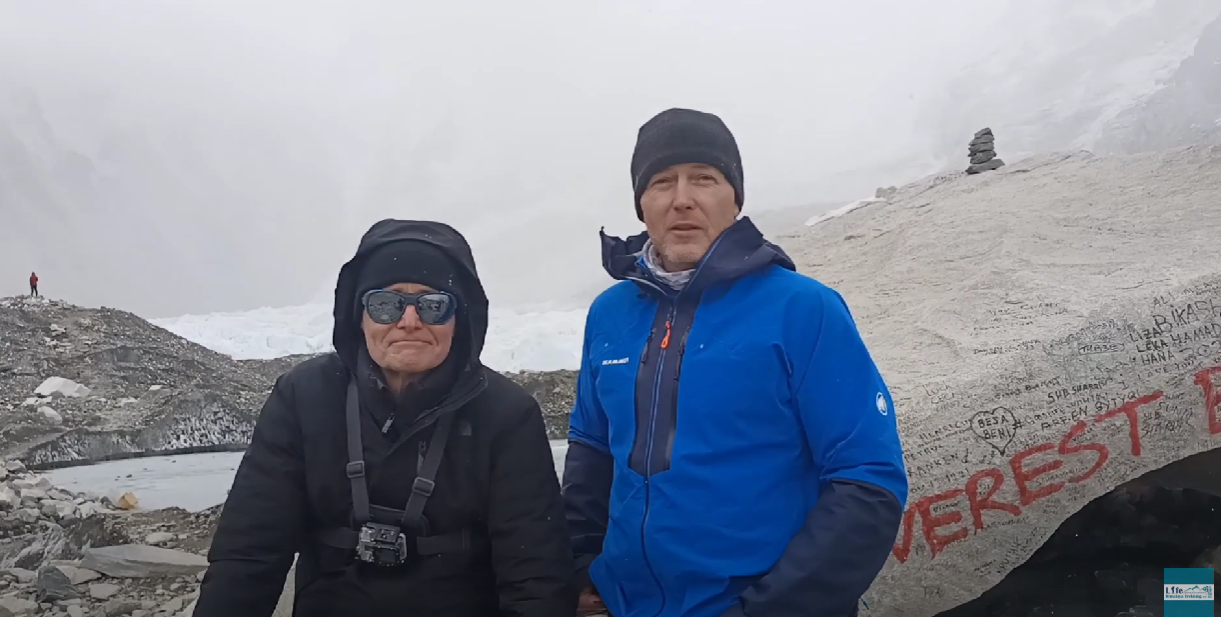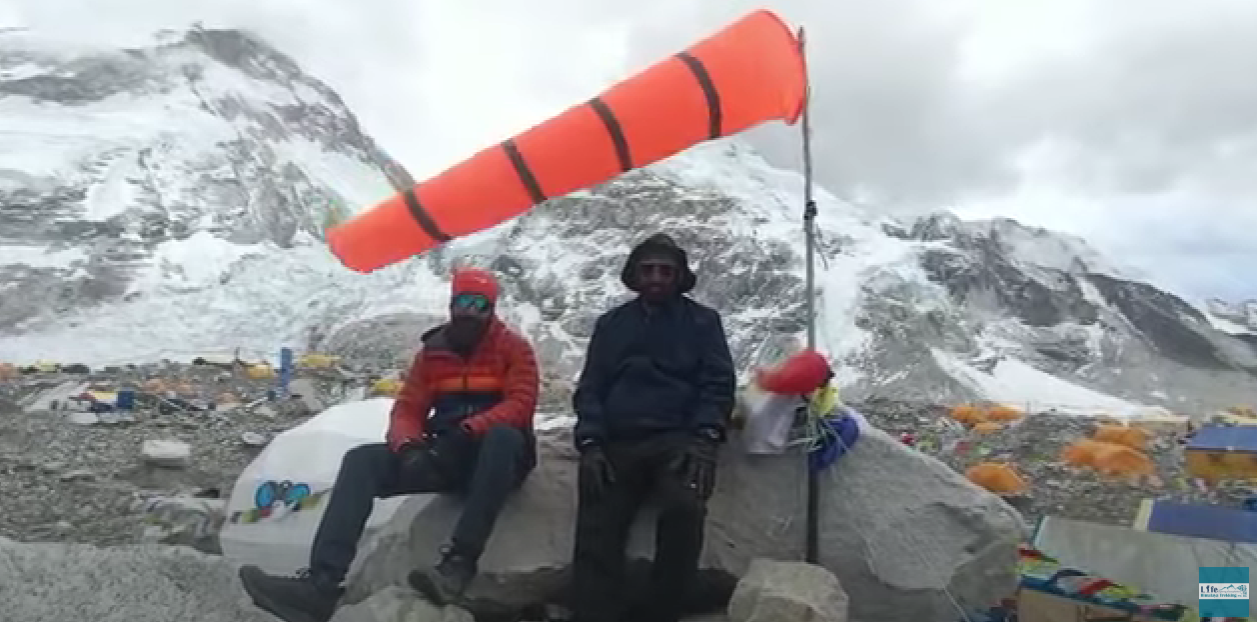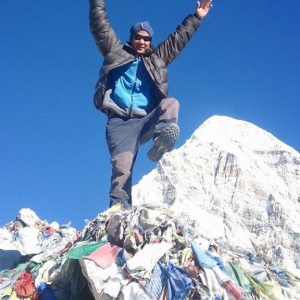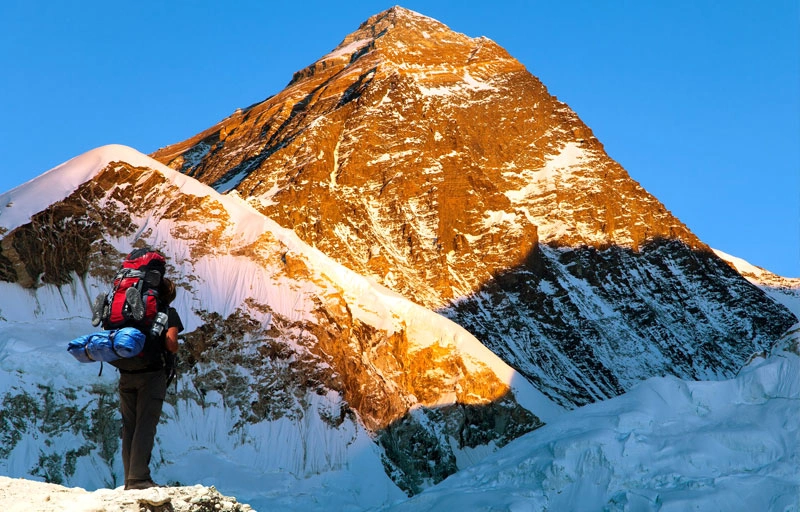Max. Altitude
6144m
Best Season
Mar-May & Sep-Nov
Activity
Peak Climbing Packages
Start / End Point
Kathmandu/Kathmandu
Overview of Thorong Peak Climbing – 16 days adventure
Thorong Peak Climbing is an adventure worth doing in 16 days that follows a modified Annapurna Circuit route combined with the ascent of Thorong Peak, a summit in the Nepal Himalayas. This involves a trek to Thorong Peak (6,144 m), a relatively non-popular trekking peak which rises south of the well-known Thorong La Pass.
During the expedition, you will walk along rich river valleys, rhododendron forests, and high-altitude deserts, engaging in the dramatic landscape and rich culture of the Annapurna region. The path goes through picturesque villages such as Manang, Pisang, and Chame in where you can observe the culture influenced by Tibetans and generosity.
There is a variety of views every day, the perspective of terraced fields and the view of green hills to the peaks hidden under the snow. You will visit some of the oldest monasteries and Muktinath Temple; you will also pass over the Thorong La Pass (5,416 m), one of the highest trekking passes in the world.
The Thorong peak climbing is a non-technical, yet strenuous, mixed snow and rock climb that deals only with the essential mountaineering skills and fitness. Even keen trekking enthusiasts with limited climbing experience can make this a reality with the help of skilled Sherpa guides.
Once you reach the top of Thorong Peak and gaze in awe at the panoramic view encompassing the Annapurna region and the Dhaulagiri region, you will feel more than pleased that you made the journey to where you are.
Highlights of Thorong Peak Climbing – 16 days adventure
- The climb to Thorong Peak (6,144 m) offers panoramic views of the Himalaya.
- Traversing the Thorong La Pass (5,416 m), which makes it one of the highest trekking passes in the world.
- Hiking across the famous Annapurna Circuit trail at Manang and the Mustang destination
- Visiting Muktinath Temple, the holy shrine of the Hindu and Buddhist religions. Several topographies include: green valleys, alpinism, elevated deserts, and ice sheets
- Scenic mountain flight JomsomPokhara, where you get to see the mountains Annapurna and Dhaulagiri from aerial views
- Local culture immersion through traditional villages, Tibetan Buddhist monasteries, and friendly local hospitality
Thorong Peak Climbing Itinerary
01
Day 01: Arrival at Kathmandu International Airport
Hello Nepal! After arrival at Tribhuvan International Airport in Kathmandu, you will be met by our representative and he will transfer you to your hotel. Once you have checked in, you should have a little rest after the journey.
In the evening, your trek guide will provide a detailed briefing on the upcoming Thorong Peak Climbing adventure. Provided you have the energy, you can go around the colorful lanes of Thamel and be a witness to the active culture of Kathmandu.
We will also have a welcome dinner with traditional Nepali foods, introducing you to the flavors we have. Sleep well- tomorrow you have the first day of your adventure in the Himalayas.
Maximum Altitude
1,320 m
Meals
Dinner
Trek Duration
30 min drive
Accomodations
3 star hotel
02
Day 02: Kathmandu City Tour and Trip Preparation
Today is dedicated to exploring the cultural heritage of the Kathmandu Valley and completing final preparations for the Thorong Peak ascent.
After breakfast, a city guide will lead you on a tour of UNESCO World Heritage Sites, including the historic palaces and temples of Kathmandu Durbar Square, the sacred Pashupatinath Temple, the serene Boudhanath Stupa, and the iconic Swayambhunath Stupa.
Between visits, we will arrange trekking permits and conduct a final gear check. Outdoor stores in Thamel provide any remaining essentials you may need, such as sleeping bags, crampons, and camp clothing.
By evening, all preparations are complete. Spend the night in Kathmandu, ready to embark on the true adventure tomorrow.
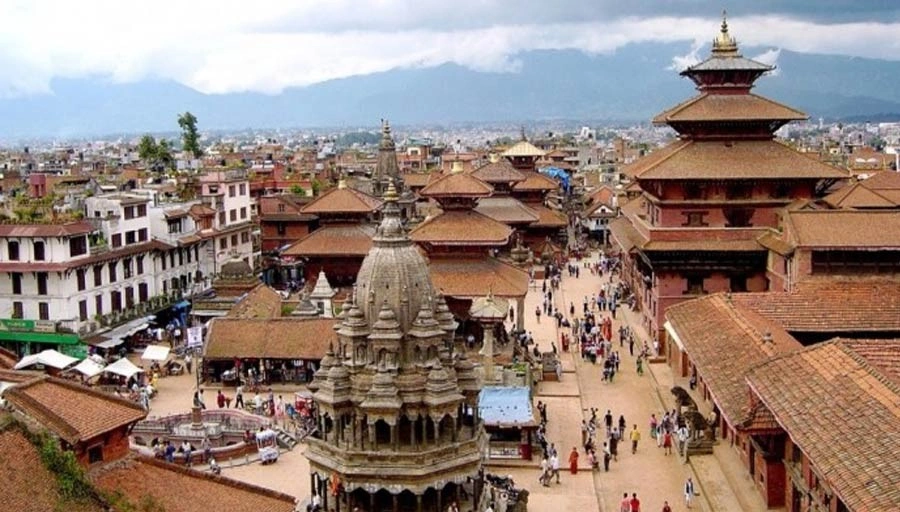
Maximum Altitude
1,360 m
Meals
Breakfast
Accomodations
3 star hotel
03
Day 03: Drive from Kathmandu to Syange
We start the day early, have breakfast, and then have a long but beautiful drive up to a region known as the Annapurna region.
Driving west through the Prithvi Highway and north into the hilly regions in a personal mid-sized jeep. We cross numerous terraced farms and quickly running rivers like the Trishuli and the Marsyangdi.
Snow-capped Ganga and Manaslu mountains can be seen far off on clear days. We travel along very narrow, winding roads to the base of Annapurna.
At the middle point, lunchtime comes, and later we start to Syange, where the fresh air and ever-running water help us settle with freshness.
In the evening, we sit down to a simple teahouse lodge. Enjoy your first night in the mountains under a starry sky, with the anticipation of the climbing Thorong Peak trek ahead.
Maximum Altitude
1,120 m
Meals
Breakfast, Lunch, Dinner
Trek Duration
8 hrs drive
Accomodations
Lodge
04
Day 04: Trek from Syange to Dharapani
The first day of Thorong Peak climbing begins in Syange, where we stride across a suspension bridge beside thunderous waterfalls. We are allowed to cut through Jagat (1,300 m), an ancient trade post, and hand over our permits at the check post.
As we wind along the Marsyangdi River valley upwards, we get into the core of the Annapurna Conservation Area. We are encompassed by soaring canyon walls, waterfalls, and green grassy slopes.
We continue with a good lunch and drive on the track through the afternoon, reaching Dharapani later in the afternoon. This busy village is located crossroads of Manaslu and Annapurna. When evening comes, the universal sense of tranquility is filled with a calm echo of the river.
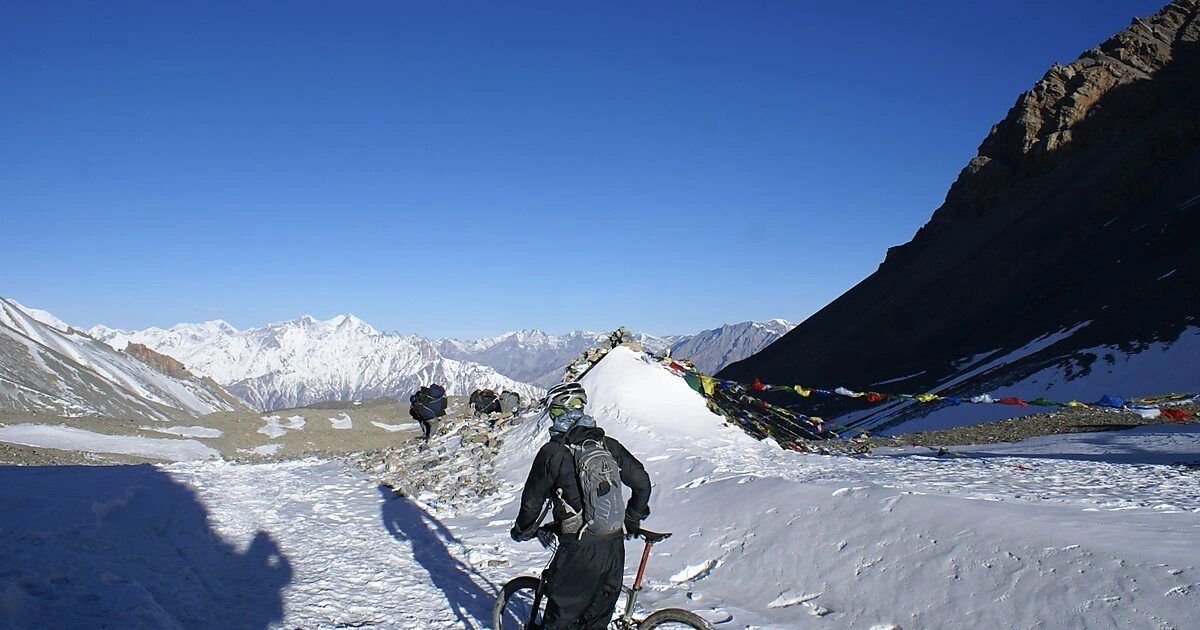
Maximum Altitude
1,860 m
Meals
Breakfast, Lunch, Dinner
Trek Duration
6-7 hrs trek
Accomodations
Lodge
05
Day 05: Trek from Dharapani to Chame
Today, we are descending into the Manang region. We pass on swinging suspension bridges over the churning Marsyangdi and watch water-powered prayer wheels rotating in its flow. Chame has a moderate to a few steep climb trails.
Peaks of the Manaslu range can be seen in the distance, and Annapurna II (7,937 m) becomes visible further closer to Chame. Chame, which is the headquarters of Manang District, is a place with prayer flags, a long mani wall, and hot springs nearby.
We get there mid-afternoon and take up quarters in a petite teahouse. We drink ginger tea to keep us warm on a cold evening. An even more dramatic scenery is provided along the route forward to Thorong Peak.
Maximum Altitude
2,650 m
Meals
Breakfast, Lunch, Dinner
Trek Duration
5-7 hrs trek
Accomodations
Lodge
06
Day 06: Trek from Chame to Pisang
Beyond Chame, the route climbs through lovely pine, forest. It is initially level and then, soon, it drops rapidly into a steep gradient. This valley cuts through between PaungdaDanda (a brutally big curving wall of stone), and high cliffs some distance away.
We are crossing a bridge over what we learn to be the Marsyangdi and ascending a bit, our nerves are sensitive to the difference in the air. The trees become thin and the mile above it becomes dry when we are close to upper Annapurna.
At noon, we leave the level valley and enter the alpine world, with shrubs and bare slopes. Pisang Peak is in front of us, and we have lunch at DhukurPokhari. The afternoon hike is a breeze, and we are at Lower Pisang (3,200 m). Upper Pisang, on a hill, has a monastery that is striking.
We camp out in a lodge at Lower Pisang, and when the sun goes down, the nearby mountains turn orange. The huge mountains of Thorong Peak are near now.
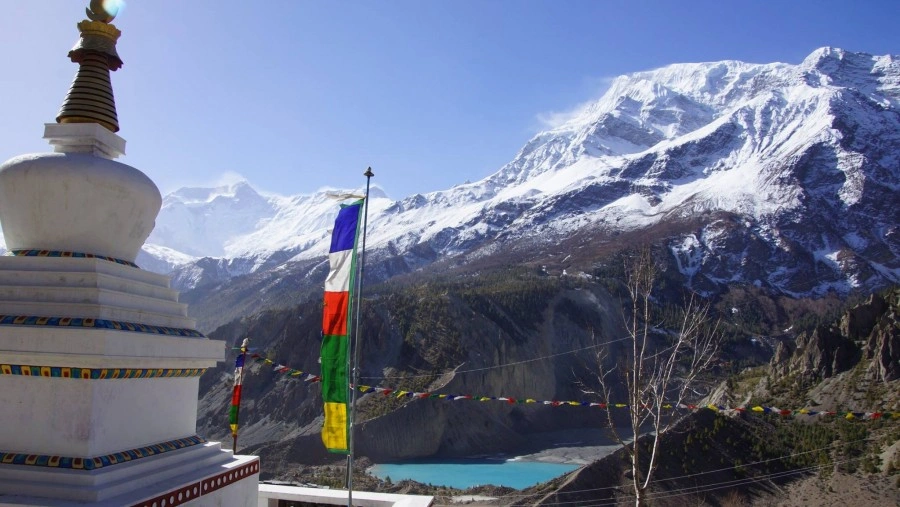
Maximum Altitude
3,250 m
Meals
Breakfast, Lunch, Dinner
Trek Duration
5-6 hrs trek
Accomodations
Lodge
07
Day 07: Trek from Pisang to Manang
From Pisang, we can choose the lower valley route. Another option is the upper trail through Ghyaru and Ngawal. When conditions allow, we recommend the upper route for its magnificent views.
The trail climbs steeply through the forest and reaches Ghyaru in about an hour. From here, the horizon is graced by Annapurna II, Annapurna IV, and Pisang Peak.
In the afternoon, we return to Manang, where a hearty meal awaits. The evening is spent in a welcoming lodge, surrounded by fellow trekkers sharing stories, each one filled with excitement for the days ahead on the Thorong Peak Climbing journey.
Maximum Altitude
3,540 m
Meals
Breakfast, Lunch, Dinner
Trek Duration
7 hrs trek
Accomodations
Lodge
08
Day 08: Acclimatization Day in Manang – Gangapurna Lake & Monasteries
We go off in Manang so your body adapts to the high altitude. The word rest is something of a moniker since we will not be sitting around but taking short hikes to acclimatize. In the morning, you can take a hike to Gangapurna Lake, a turquoise glacial lake at the base of Gangapurna Glacier.
An hour climb up to the viewpoint features a magnificent panorama of Manang and the valley. A short uphill walk to the BhojoGompa or PrakenGompa on the hillside, blessing trekkers with apparently little more religious purpose than entertaining them, is also a favourite.
Such excursions elevate you beyond 3,800 m, and on the way back, you arrive at Manang (3,540 m) to spend the night, which is a part of a successful acclimatization strategy.
Spend the day sightseeing in Manang: explore the ancient Braga Monastery, which clings to a mountainside, or visit the Manang Museum, where information about the culture of the area is available.
In the late afternoon, you are fresher and used to the altitude. Our next night in Manang gets us acclimatized to the greater heights to come.
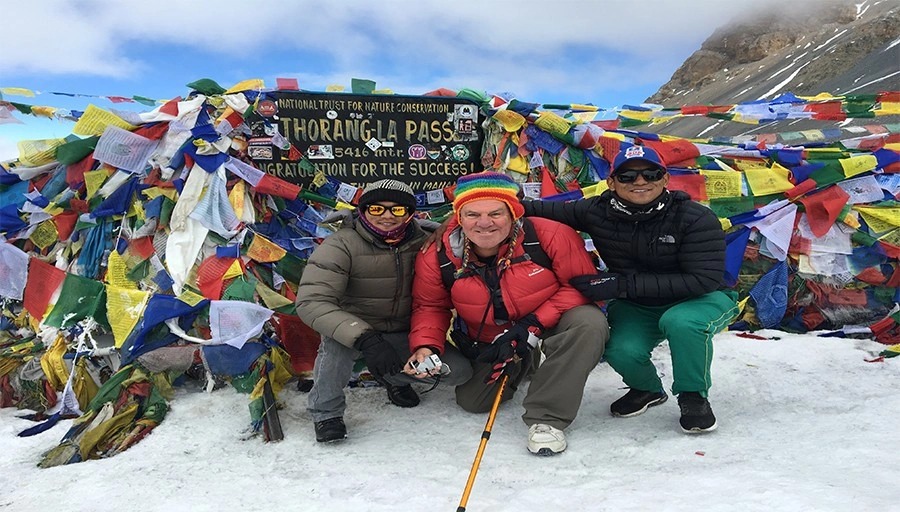
Maximum Altitude
3,900 m
Meals
Breakfast, Lunch, Dinner
Trek Duration
3-4 hrs trek
Accomodations
Lodge
09
Day 09: Trek from Manang to ChuriLedar (Yak Kharka)
The route climbs continuously towards the alpine tundra after leaving Manang. We ascend out of the Marshyangdi Valley and head north up the Jarsang Khola valley.
One hour later, we arrive in Tenki Village and pass through pastures where we can see local herders tending yaks and horses. Yak Kharka is literally yak pasture, and to that name we came just past lunchtime (about 4,020 m). This is where we stop for lunch in an open valley bordered by high cliffs.
On the hillsides, you can see blue sheep, or above the hills, majestic Himalayan vultures. When we have had supper, we start off another hour or two on ChuriLedar. It is a little hamlet and has a couple of lodges just a little bit higher than Yak Kharka.
Along with the elevation, we are going slow and steady on how we move, so as not to strain ourselves. We will most probably discuss the upcoming Thorong La Pass and our Thorong peak climbing over dinner. To retire early tonight, more altitude is likely to make sleep difficult.
Maximum Altitude
4,200 m
Meals
Breakfast, Lunch, Dinner
Trek Duration
4-5 hrs trek
Accomodations
Lodge
10
Day 10: Trek from ChuriLedar to ThorongPhedi
Today is a shorter trek, and we are now at heights where every step may seem difficult. We leave ChuriLedar and pass a precarious-looking wooden bridge over the KoneKhola (river) and climb a ridge. The path passes through a zone of landslides-be careful on the graveled track and keep an eye out in case some mountain goats are dislodging stones!
After 3 or so hours, we reach Thorong Phedi (4,450 m), which literally means the foot of Thorong. Thorong Phedi is an inhospitable settlement having a couple of lodges that serve trekkers and climbers.
We arrive early in the afternoon, here, and we have lunch here. As it is not far, today, quite a big choice: stay overnight at Thorong Phedi, or go ahead and sleep at High Camp. A large number of climbers prefer to leave for Thorong High Camp to make the following day shorter.
Today we might climb for a further hour to High Camp (4,925 m), subject to the strength of the team and acclimatization. Either way, we spend the free time trying to rest as much as we can. You can head up the hillside, also short hikes up the hillside to acclimatize and sleep better in case you are staying in Phedi.
There is last-minute packing for the Thorong Peak climbing. Every check on the crampons, ropes, and gear as the team prepares to head to the summit. Be in bed early, we have an early start in the morning.
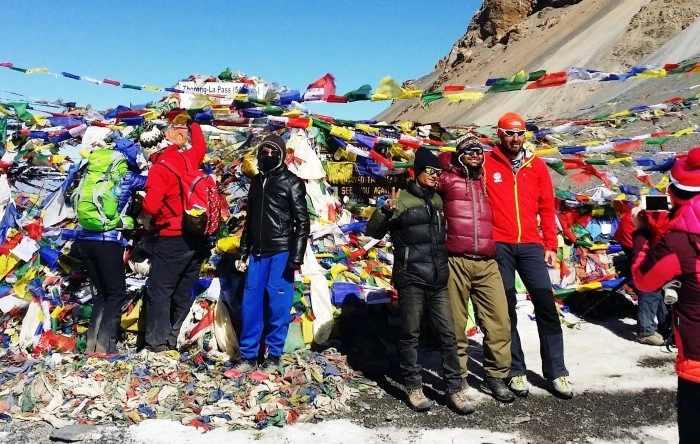
Maximum Altitude
4,450 m
Meals
Breakfast, Lunch, Dinner
Trek Duration
5-6 hrs trek
Accomodations
Lodge
11
Day 11: Trek from ThorongPhedi to Thorong High Camp (via Thorong La approach)
Our walking starts early in the morning, and we are climbing up directly through an uphill path to Thorong High Camp. The trail winds along a dry and exposed hillside, and the elevation, of course, slows us down.
In the morning, the valley provides beautiful views of the sun rays going through it. After 2 or 3 hours of constant switchback, we arrive at High Camp (4,925 m), where a few huts and tents are set on a rocky ridge.
Depending on the level of our energy, we can head further to Thorong La Pass (5416 m) in order to help acclimatization, which is based on the principle of the climb high, sleep low, and then go back to High Camp and spend the night there. At this altitude, we have snow-capped mountains all around us.
The climbing guide gives a thorough brief in the afternoon, inspects harnesses and mountaineering gear, and covers essential techniques of climbing. We eat an early dinner and head in to rest, the summit push is now only a few hours away.
Maximum Altitude
4,925 m
Meals
Breakfast, Lunch, Dinner
Trek Duration
3-4 hrs trek
Accomodations
Lodge
12
Day 12: Summit Thorong Peak (6,144 m) and Trek to Muktinath
Summit Day! We get up at approximately 2:00 AM, eat a small energizing meal and hot tea, and put on our headlamps and gear. The next morning, we were going to the peak of Thorong, under a sky full of stars. This trail starts off with a climb to Thorong La Pass.
As the pre-dawn light reveals the pass marker (5,416 m) to us, we have a brief rest. From Thorong La Pass, we branch off toward Thorong Peak for the summit climb. The ascent is punishing and strenuous.
Our guides will rope you up in sections where it is necessary. We confront the slope of 35-40 degrees of snow with the assistance of crampons and ice axes. One cannot breathe easily as the air is thin, and this is where our training and acclimatization come in handy.
As the sun rises, it paints the sky orange over the Himalayas as we prepare to make the final push. By mid-morning, we are on the top of Thorong Peak (6,144 m) after difficult hours. The summit view is truly heartwarming.
We backtrack to Thorong La Pass and move further down into the Mustang side. It is a long downward trail, but the promise of thicker air and the sleep we will get tonight propels us on. We can spot the flags and temples of Muktinath below late in the morning.
We feel relieved but also exhausted at Muktinath (3,710 m). Not only are you up the top of Thorong, but almost 2,500 vertical meters today! We get a lodge in Muktinath. Rest is well earned.
Maximum Altitude
6,144 m
Meals
Breakfast, Lunch, Dinner
Trek Duration
9 hrs trek
Accomodations
Lodge
13
Day 13: Explore Muktinath Temple and Trek to Jomsom
It is magical to wake up in Muktinath. This is a holy pilgrimage village for both Hindus and Buddhists. Very early in the morning, we walk to the Muktinath Temple complex. It is here that one can dip the hands and face in the 108 stone water dispensers. Observe the well-known natural fire created by burning natural gas through rocks in the Jwala Mai temple.
We take a little time to bask in the tranquility and perhaps receive a blessing, then we walk back to the lodge to enjoy breakfast. Then we begin a hike to Jomsom. Trail heads down valley by the village of Ranipauwa and on to the Kali Gandaki valley.
The scenery now takes on a barren rain shadow desert feel, and spectacular views of Mount Nilgiri and Dhaulagiri appear. We ascend a relatively flat and easy trail that goes through Kagbeni (2,800 m), an old village that shields the passages to Upper Mustang. Stop here and browse the narrow alleys and maybe have lunch.
Here, we turn up the riverbed after Kagbeni toward Jomsom. In the afternoon, strong winds usually blow up the Kali Gandaki Gorge by late afternoon, and we get to Jomsom (2,720 m), the administrative headquarters of Mustang.
Jomsom bears a semblance of a frontier town almost with an airport, military security posts, and bakeries.
Celebrate the completion of the trekking portion of our Thorong Peak Climbing journey.
It is here that you have a goodbye dinner with your trekking team, since some of the staff will make their way back to Pokhara using road transportation. Have a hot shower and a nice bed one more time in the mountains.
Maximum Altitude
3,710 m
Meals
Breakfast, Lunch, Dinner
Trek Duration
6-7 hrs trek
Accomodations
Lodge
14
Day 14: Fly from Jomsom to Pokhara
This morning, we have an amazing flight to Pokhara departing from Jomsom. Some planes jump off the mountain runway in Jomsom either early in the morning when the winds are calm. Within 20 minutes, we are down the dry Mustang area to the thick green hills of Pokhara (820 m).
The air is so warm on stepping out in Pokhara; it’s a cool climate by the lake, so unlike the cold, thin air of the high Himalaya.
We take you to Phewa Lake to your hotel. You are free, as on any other day, to rest and celebrate success. We can organize optional sightseeing in case you are not too tired: go to the World Peace Pagoda on the top of a hill, or visit local caves and the International Mountain Museum.
The team goes out to one of the finest restaurants in Pokhara to have a celebration dinner in the evening. Rereading the path you went to the summit and returned, you will definitely get a sense of nostalgia and pride. The next day we go back to Kathmandu.

Maximum Altitude
2,720 m
Meals
Breakfast, Lunch, Dinner
Accomodations
Hotel
Transportation
20 min Flight
15
Day 15: Drive from Pokhara to Kathmandu
We leave Pokhara back to Kathmandu on a road trip after breakfast. You will check rural towns, rice terraced green hills, and rolling hills. In the middle, we will have a mid-day meal at a way-side restaurant- have your last meal with the backdrop of the Nepal hills.
The trip gives an opportunity to look back at the last two weeks: back alleys of Kathmandu to the sound of silence in the high mountains and vice versa. Later afternoon or evening, we land in Kathmandu and we get into your hotel. The remainder of the day is free.
Maybe you will do some shopping in Thamel or just have a hot shower and take a rest. In the evening, we host a special farewell dinner in Kathmandu to celebrate the successful Thorong Peak Climbing adventure.
To finish the trip with a varied note, cultural music and dance are all you need to watch as you nibble on the Nepali delights dinner.
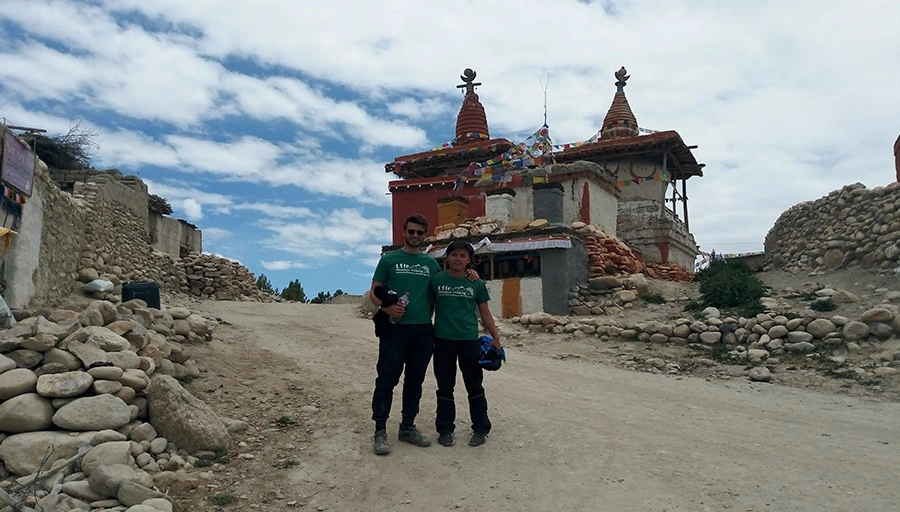
Maximum Altitude
1,350 m
Meals
Breakfast, Lunch, Dinner
Trek Duration
6-7 hrs drive
Accomodations
Hotel
16
Day 16: Departure from Nepal
It comes to the end of your fantastic 16-day tour today. At the time of breakfast, we will drive you to the Tribhuvan International Airport, where you will be given the next flight.
In case your flight is late, you may manage to take one more stroll through Thamel or the garden of dreams to have some peace.
Goodbye and Namaste, and wishing you that the moment you had at climbing the Thorong peak and the experience during the trek of Annapurna stay with you forever. Otherwise, wish you a safe trip home and congratulations once more on the landing of Thorong Peak.
Maximum Altitude
1,320 m
Meals
Breakfast
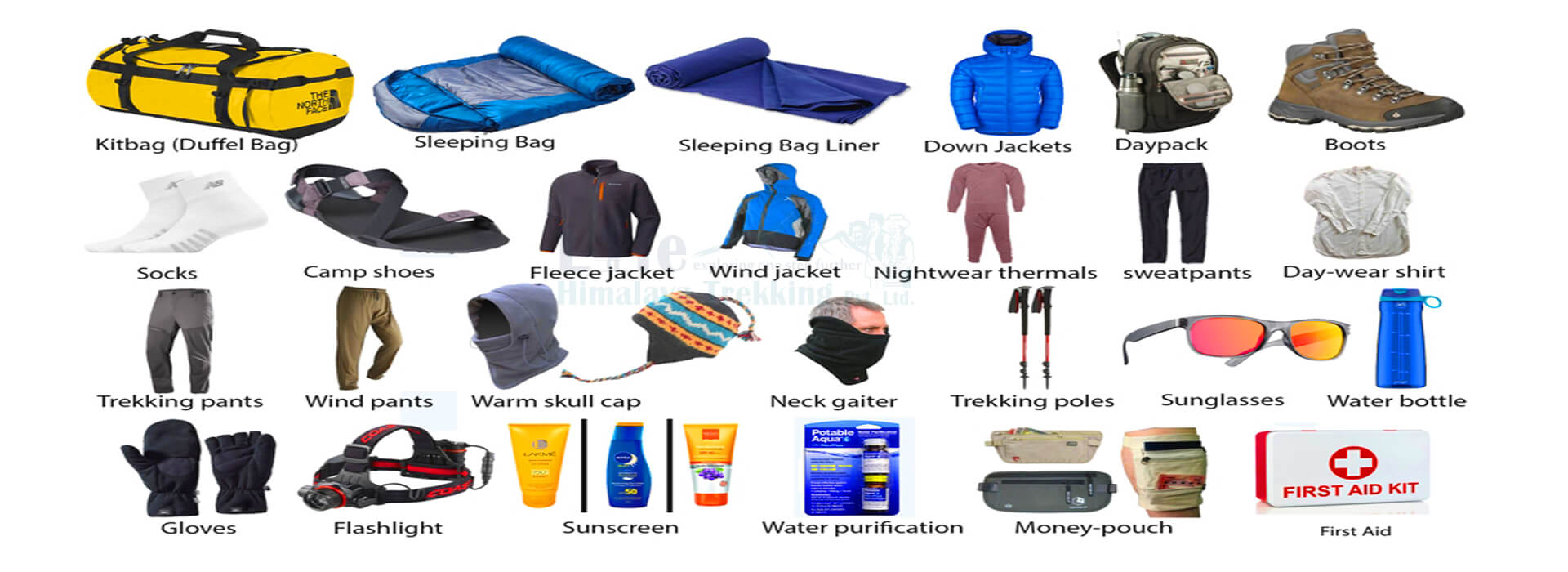

Required Equipments for Trekking in Nepal
- Breathable Underwear
- Sports Bra
- Base Layers
- Trekking Shirts
- Trekking Trousers and Shorts
- Fleece Jacket
- Down jacket (insulated jacket)
- Windcheater (water proof)
- Sun protection Hat
- Headband or Beanie
- Scarf or neckband
- Gloves (inner and outer )
- Hiking Boots
- Trekking Shoes
- Hiking Socks
- Thermal Socks
- Gaiters
- Duffel Bag
- Day pack
- Sleeping Bag
- Trekking poles
- Sunglasses
- Hydration bladder or Water bottle
- Head Lamps
- Batteries
- Personal towel
- Swiss army knife
- Sun lotion
- Medical & first-aid kit
- Woolen socks
- Waterproof jacket
- Lip Guard
- Insulated pants
- Baby wipers
Required Equipments for Climbing in Nepal
- Water bottle
- Batteries and bulbs
- Flashlight
- Personal towel
- Swiss army knife
- Rucksack
- Sun lotion
- Medical & first-aid kit
- Sewing kit
- Polypropylene/wool socks
- Other required equipment
- Sleeping bag
- Down Jacket
- Waterproof jacket
- Trekking shoes/boots
- Camp shoes
- Jumperorpile jacket
- Hiking pants
- Hiking shirts
- Full–sleeves shirt
- T-shirts
- Sun hat
- Gloves
- Woolen hat
- Long underwear
- Goggles or sun glasses
- Gaiters
- Sun block for lips
- Light cotton socks
- Mountain trekking boots
- Woolen socks to wear with boots
- Nylon wind breaker
- Insulated pants
- Nylon wind pants
- Long sleeved cotton/woolen shirts
- Sun hat
- Long cotton hiking shorts
- Fleece/wool for climbing
- Lightweight fleece
- Sleeping pad (karri mat) or thermarest
- Down high altitude sleeping bag
- Down jacket/trousers/vest
- Light cotton athletic socks and wool socks
- Water proof climbing jacket
- Head torch/batteries/bulbs
- Climbing sunglasses
- Lightweight thermal/insulated ski gloves
- Sun screen
- Warm climbing trousers
- Wool long underwear
- Other required equipment
- Climbing boots
- Gaiters
- Ice axe
- Harness
- Crampons
- Karabiners
- Tapes/slings
- Snow bars
- Ice screws
- Rock pegs
- Deadmen
- Crash hat
- Day bag
- Rucksack
- Lip salve
- T-shirts
- Ascenders
- Ascenders
- Kit bag
Whats Included
- The airport picks up and drops off international and domestic.
- Complete departure information, About Peak Climbing, flight ticket, guide, altitude sickness, and reconfirmation and extend visa service (if necessary) and extra tour service before the trek starts.
- 04-night 3-star hotel in Kathmandu with breakfast.
- Trek flight from Jomsom to Pokhara for members and involved staff.
- Pokhara Phewa lake boating tour
- Private transportation picks up and drops.
- 4.*4 private Landcruiser jeep to trip starting point
- Pokhara to Kathmandu with private transport Car/van /Jeep/ bus
- Best Lodge accommodation & full board meals throughout the trek.
- Breakfast, Lunch, and Dinner included are chosen from the lodge menu.
- Twin-share accommodation during the trek.
- As per group size experienced government license holder Climbing guide, helpful and friendly strong, porters (1 porter for 2 people) and their food, accommodation, salary, equipment, and accidental insurance for all staff. ( 5 trekkers 1 assistant guide )
- Experienced Climbing Guide (Sherpa).
- A warm Down jacket and four seasonal sleeping bags will be provided during the Thorong peak climbing (the down jacket and sleeping bag are to be returned after the trip )
- Climbing Equipment for the Thorong peak.
- Annapurna Conservation Area trek permit fee.
- Thorong Peak climbing trail map.
- Climbing permits (Please bring 3 passport-size photos for permits)
- First Aid kits for the staff and the groups.
- Services coordination for emergency and rescue operations
- Government taxes & office service charge
- Farewell dinner at reputed traditional Nepali Restaurant
- Achievement certificate
Whats Excluded
- Meals not quantified in the ‘Meal Inclusions’ in the itinerary’
- Travel Insurance
- International airfare
- Nepal entry visa charge.
- All beverage and other personal expenses.
- Snacks and other personal expenses
- Hot shower Wifi, Telephone during the trip.
- Tips for Driver, Porter & Guide.
Thorong Peak Climbing - Essential Information
Difficulty
Thorong Peak Climbing is a moderate to challenging adventure, suitable for experienced trekkers and aspiring climbers. There are long days of trekking and a non-technical ascending to 6,144 m, and though this is challenging can be accomplished with proper fitness.
We rate the trekking section as moderate level-you will be hiking 5-7 hrs a day on tough mountain trails carrying a light backpack.
The technical aspect of the summit lies is the additional level of difficulty you will have to climb with special gear such as crampons, ropes, and an ice axe on 30-40 degree snow slopes around the summit.
Whereas the Thorang peak climb is not immensely technical, the climb does demand basic mountaineering ability and an appetite for steep snow. Experience of high-altitude trekking is highly desirable since you will be trekking even higher than the 5,000 m pass and the 6,000 m peak.
The main thing is physical preparation, build up your stamina and leg strength, before the trip. You will cope with the reduced oxygen levels at altitude by doing cardiovascular training (hiking, running, and cycling). Rest days to acclimatize are in the itinerary and on the trail; this makes it much safer and ensures that you achieve success.
Mental will is also key. The day of the summit is long and tough. With this said, the Thorong Peak in Nepal can be said to be one of the more accessible peaks in Nepal, standing at 6000 meters. Guided by our qualified guides, first-time climbers (trekking background) have a high chance of summiting the mountain.
We ensure we are pacing and check on your health all the time. It is a demanding journey and will suit people new to technical climbing, because it requires some prior experience in multi-day high-altitude trekking, along with fitness and an open outlook to learn.
Best Season
The best seasons for Thorong Peak Climbing are spring and autumn, when Nepal’s weather is at its most stable and mountain views are crystal clear. A convenient period is spring (March to May).
Weather is generally stable and days are lengthier, but nights at Thorong High Camp can drop below –15°C, with the rhododendron woods on the way in full-color blossom. It is fairly good in spring, especially during the climbing period of Thorong Peak, because the snow pack is stable and weather conditions are generally dry.
There could also be some snow up the heights because of winter, but the climate has warmed up, so it should be endurable. But another ideal time is autumn (September to November).
The skies are typically spotless in the post-monsoon season, and one can have breathtaking views of the Annapurna and Dhaulagiri ranges. It is a cool and stable weather that does not have significant rain and storm probabilities.
Autumn is the busiest trekking season in Nepal, with many trekkers and climbers on their way up and down trails. The lower valleys have comfortable temperatures during the day, and nights in the high camps are cold, but not inhuman (range of –10°C or below at Thorong High Camp).
Food and Accommodation
In the Thorong peak climbing, we will have the lodging facility of tea house lodges; it is basic but comfortable in the villages every night. Most teahouses offer their visitors a plain room and beds, a blanket, and pillows. Rooms are not heated, and so you need a warm sleeping bag.
The meals throughout the trek are plentiful and in many cases surprisingly diverse. You can select food from the lodge menusand they normally contain Nepali food and some international favorites. Its staple is dal bhat (rice, lentil soup, vegetable curry), an endless, energy-dense meal that jokingly refers to as 24-hour power.
Noodle dishes, as well as fried rice, momos (dumplings), pasta, soup, porridge, and eggs. Manang and Jomsom have bakeries that sell freshly baked bread and coffee. Meat can be found in some villages, but above Chame, trekkers should avoid it for food safety due to a lack of refrigeration. Most trekkers do not eat it at higher altitudes on the grounds of freshness.
We would advise on vegetarian foods when Thorong peak climbing, just to be on the safer side and to help in the acclimatization.
All the meals through the trek and climb are mostly included in our package, which implies that there will be several breakfasts, lunches, and dinners every day.
Most of the time when on trek, breakfast and dinner are in the same lodge that you are staying in, lunch is at another lodge or a picturesque area along the track. You can easily obtain safe drinking water. It is important to stay hydrated at altitude.
The Thorong peak climbing part will be that, at Thorong High Camp, you will be camping or resting in the basic lodge, depending on the situation. We provide boiled water for your bottles.
In cities (Kathmandu and Pokhara), stay is provided in comfortable 3-star hotels on a breakfast basis. In these cities, you will be able to sample both Nepali and international food all in one place, which is a good reprieve after 2 weeks in the mountains!
Transportation and Facilities
Our Thorong Peak Climbing package includes all necessary transportation: private vehicles for airport transfers and after drive from Kathmandu to Syange.
The road to Besisahar is accessible by private vehicle, but beyond Besisahar to Syange requires a 4WD jeep due to rough terrain. The ride back to Kathmandu by private car/van or tourist bus takes place, but a flight is possible at a supplementary cost.
The facilities during the trek are primitive, but are getting better. Most villages have electricity to charge devices (small charge), and some, such as Manang, Chame, and Jomsom, have mobile connection and paid Wi-Fi. There is little medical assistance, but there are clinics in the larger villages, and evacuation (horse or helicopter) can be carried out in an emergency.
Most of the toilets are squat-style, with paid-only hot showers up to Manang. Basic amenities are very basic higher up. Nature and adventure are what it targets, so brace yourself to live a simple life.
What to Expect
Be prepared to go on long days of pleasant trekking with high altitude challenges and a very fulfilling Himalayan experience of a lifetime. Each day you will hike 5-7 hours in variable terrain and topography-lush valleys to rocky ridges- through forest roads to snow-covered slopes.
Altitude ranges between 1,300 m to more than 6000 m, and hence, prepare to experience a broad range of temperatures. You will be walking with a light daypack and porters will carry your major equipment, but days are beginning early and by the afternoon you reach teahouses.
The most important thing is acclimatization, and we have incorporated a program in our Thorong Peak climbing schedule that will enable your body to acclimatize safely. Summit day is hard.
A good alpine start before dawn, some rope work, and a long hike down. Culturally, one should anticipate rich experiences with the local ethnic people and influences of the Tibetan Buddhist culture.
Our team, who are experienced, will keep you safe and comfortable. Be open to change-weather and mountain conditions sometimes can change plans-but with an open mind, this climb will be an experience not forgotten.
Guide and Staff
Your Thorong Peak Climbing journey is led by an experienced, licensed trekking guide and a certified climbing Sherpa for the summit. In many cases, the Sherpa is the same guide in both roles, or may be joined at Manang/Base Camp.
Our guides are fluent in English, first aid and altitude safety trained, and your pace, comfort, and safety are assured. You are assigned porters who carry your large luggage, and we work diligently to make sure that the porters are well taken care of and equipped adequately.
During a day on the summit, different service levels are maintained with a guide-to-climber ratio well below the norm on summit day and with the use of assistant guides when corresponding to larger groups.
You can expect an educated, enthusiastic, and accommodating staff whose main goal is to get you through the trek successfully. Many trekkers will most likely consider members of the staff their new best friends.
Altitude Sickness
Thorong Peak Climbing poses a significant risk of altitude sickness (Acute Mountain Sickness, AMS), as much of the trek is above 3,500 m, with the summit exceeding 6,000 m. We follow a high/sleep low itinerary, acclimatizing in Manang (3,540 m) and sleeping progressively higher while spending nights at lower altitudes.
AMS can be accompanied by headache, nausea, dizziness, fatigue, loss of appetite, and sleeping problems. Each of us acclimatizes to the altitude differently, and hence our experienced guides keep an eye on you frequently and are trained on the early symptoms.
As a way of curbing the occurrence of AMS, we propose a moderate pace during the trek, sufficient hydration, and avoidance of alcohol, smoking.
In case you get some symptoms, inform your guide at once. Mild cases of AMS commonly pass by themselves or by rest, fluid engagement, or drugs such as Diamox, which is to be discussed with a doctor prior to the trip.
Sometimes, we would stall or lose altitude to assist recovery. It is essential that people with severe symptoms (confusion, intense headache or breathing difficulties) should descend rapidly.
We can provide evacuation by helicopter or horse transport in emergency cases. Therefore, you should carry travel insurance that includes high-altitude rescue coverage.
We only attempt the summit push when the team is highly acclimatized, as the latter will impose physical strenuous activity on the body at high elevations.
The majority of the people who are trekking only follow the acclimatization plan to complete the journey without any severe problems. A safe and fun ride will involve listening to your body and communicating freely with your guides.
Gadgets, Charging, and Internet
Staying connected and keeping your devices charged during the Thorong Peak Climbing trip requires a bit of planning, but it’s certainly possible. Most of the villages along the Annapurna Circuit have electricity. Either a solar panel or a small hydro generator is mounted in teahouses.
Below the villages (up to Manang), you are likely able to charge your phone, camera, or power bank in the power strips of the dining hall (typically costing NPR 100-300 per hour/device, depending on the area, and device energy consumption).
Bring a personal power bank with you so you can charge that and then charge things at night in your room. North of Manang (Yak Kharka, Phedi, High Camp,) there are few charging options, and their costs are higher because these lodges have a limited, powered outlet supply.
It is also advisable to carry extra batteries for your vital equipment (camera) and to store your electronics in your sleeping bag during the night so that the cold does not sap your batteries.
As concerns access to the Internet, in the villages along the trekking route, you can access Wi-Fi services, Internet cafes, or Wi-Fi has been developed in places such as Chame and Manang and sold. In a certain region, there is also a system known as Everest Link/Annapurna Link, where you can purchase a recharge card to use Wi-Fi.
But it may be such a slow rate, and during peak hours, it may be in effect inoperative. Do not expect to stream videos; however, occasionally, a quick text or email will be possible. There is partial mobile phone coverage. Ncell and Nepal Telecom (NTC).
You may have cell reception in places like Chame, Pisang, Manang, and definitely in Jomsom, which is well covered. It may be helpful to purchase a local SIM card in Kathmandu (and a data pack). The NTC network has better coverage in rural locations.
Visa and Permit
Most of the climbers will acquire a Nepal visitor visa to get into Nepal. A visa on arrival is available in the Tribhuvan International Airport (Kathmandu) as well as land entry points.
This is simple, it fills out the form or even online before arriving to save time on the fee, and you will receive the stamp with the visa. Make sure your passport is valid for more than 6 months after your entry date and has double blank pages.
You might also bring some passport photos; although they no longer accept passport photos for your visa on arrival, they do come in handy for some trekking permits.
For the Thorong Peak Climbing trip, multiple permits are required: – Annapurna Conservation Area Permit (ACAP): This is required for any trekker within the Annapurna region. Foreigners would pay about NPR 3,000 as a permit fee. It assists in the conservation and preservation of the trails.
At multiple checkpoints, you will have to demonstrate this. – Trekkers Information Management System (TIMS) Card: This is a permit card trekkers pay to be registered (approximately 2,000 NPR) and monitored in terms of their safety. The TIMS cards are now of different colors for solo trekkers and those trekkers who may have guides.
Nepal, since April 2023, requires all trekkers to be guided in popular trails, and so you will get a Blue TIMS (guided), which will be taken care of by our agency on your behalf.
Thorong Peak Climbing Permit: Thorong Peak is classified as a “trekking peak” (Group ‘A’ or ‘B’) by the Nepal Mountaineering Association (NMA). To obtain a special climbing permit required for it, we will do this on your behalf with the NMA or the Department of Tourism.
We will take the paperwork; however, you must bring copies of your passports and passport pictures. You must have this permit to legally climb the mountain and pay for the presence of a Liaison Officer.
We, as a firm, will organize all these permits either in advance or in Kathmandu as a package. Only take some photos as requested, and send us the necessary information, and we are good to go.
Whenever you are on a trek, it is a good idea to bring your permits along that you have in your daypack. ACAP/TIMS will be requested to be shown at the checkpoints by the authorities. These permits ultimately serve as good souvenirs of your adventure once you are done with it.
Your Extra Expenses
Our tour package is rather comprehensive; however, you should plan some extra spending that is not mentioned. The airfare to Nepal is not covered as such, so you are on your own. Some of your meals will be free, namely lunch and dinner in the cities.
You may wish to visit some different restaurants, hence you may want to budget on the range of 10-15 a day, depending on your preferences.
During the trek, you are fed, but any snacks, bottled water, or desserts you may desire will be an addition. To mention a few things: energy bars, chocolate, soft drinks, or alcohol.
Additional boiled water or tea/coffee, besides what one is given as meals, might also be charged. It is also prudent to carry a few water purification tablets or a Stripe to ensure that one does not have excessive plastic bottles.
This trip needs travel insurance (when covering high altitude trekking/climbing and emergency evacuation), which you book before you go. Equally, there are additional costs associated with the Nepal entry.
Need to rent or purchase gear in Kathmandu, which is another cost- there are many gear rental shops here; e.g., down jacket rentals cost around 1-2 dollars/day.
No tip is given to your guides or porters, but it is customary to do so. Clients usually collectively tip the guide and a bit less than that a day per porter. Naturally, it depends on how satisfied you are, but do count this in your travel budget as the crew is working hard to ensure your trip is successful.
Other personal expenses might be: souvenirs (handicrafts, t-shirts, prayer flags), any laundry service (available in Kathmandu/Pokhara and sometimes halfway in the trek at Manang for a fee), hot shower or Wi-Fi cards in the trek.
Also, any other trip extension activities that you may want to do (such as a paragliding flight in Pokhara or a cultural show in Kathmandu). Provided all goes well, you may not have to spend very much on the trek beyond beverages and tips.
Trip Extension
After completing your Thorong Peak Climbing adventure, many travelers choose to extend their stay in Nepal. A convenient trip is to Chitwan National Park with 2-3 days of jungle safari, in which it is possible to see rhinos, crocodiles, and even tigers.
When you are the relaxing type, take additional days in Pokhara (which you arrive at on Day 14) and indulge yourself in paragliding, spa, cafes along the lakes, or yoga retreats. To get more trekking, you can think about the Annapurna Base Camp trek or even shorter hikes such as Poon Hill.
This is now a trip that adventurous climbers may combine with another peak, such as the Chulu West or Chulu East, with the provision that an advanced booking is made.
A favorite type of extension is cultural–visit Kathmandu Valley and beyond, experience Bhaktapur, or see the sunrise at Nagarkot. Given enough time, side trips to Tibet or Bhutan can be organized out of Kathmandu, as well.
Extensions can be completely tailored, whether you want more adventure or low-level relaxation. Just tell us what you want in advance, and we will assist you in customizing your ideal post-climb plan.
Private Trip vs Group Join Trip
When booking Thorong Peak Climbing, you can choose between a private trip or joining a group departure, each with its benefits.
A personal tour will provide flexibility-you choose the departure dates and we can plan the itinerary around this so that it best suits you, such as adjusting the pace or including acclimatization days.
It is perfect when two people, families, or friends would like a more personal journey and have the time to explore such places as Tilicho Lake, where you customize your route and where the guide personally takes care of them. Nevertheless, individual journeys are sometimes more costly because shared expenses do not occur.
Group trips are ideal when an individual journey or a cheap trip is the objective. We have less specific date leave trips, and people come together to make teams of 2-12 people. It is cheaper compared to individual costs, and, in addition to that, you get to interact with other adventurers.
The route is set, and as such, the group goes at a pace of its own, and the guides make sure that no one falls behind. Bigger groups can be assigned additional assistant guides to offer adequate assistance. Safety is approached in a collaborative manner with prepared plans for altitude problems or emergencies that cause fewer disturbances.
Precisely, when you are about flexibility and personalization, select a personal trip, or a social trip when you need a much cheaper and a convenient experience.
Others even join the two by initially travelling in a group, then follow it up with personal extensions. In whichever you decide to go, we can assure you of quality, experienced guides, and a lifetime climb!
FAQs For Thorong Peak Climbing – 16 days adventure
How difficult is Thorong Peak Climbing and do I need prior experience?
Thorong Peak Climbing is a challenging endeavor, but very achievable with good fitness. The trek section is moderate, as is the standard Annapurna Circuit (long days of trekking, high altitude).
When is the best time to go for Thorong Peak Climbing?
The best time to climb Thorong Peak is during Nepal’s two main trekking seasons: spring (March to May) and autumn (September to November).
What permits and documents do I need for climbing Thorong Peak?
You will need three main permits: Annapurna Conservation Area Permit (ACAP), a TIMS Card, and the Thorong Peak Climbing Permit.
How do we handle altitude sickness if it occurs?
We treat altitude sickness before it occurs. It also consists of acclimatization days (such as in Manang, where the rest day is scheduled) to give your body time to get used to the climate. We would recommend that you stay well hydrated, avoid alcohol, and mention symptoms at the very first instance.
What equipment is provided, and what do I need to bring?
We supply group equipment such as climbing and camping gear; you are required to bring personal gear and clothing. In particular, our agency will rent climbing ropes, ice screws, carabiners, and an ice climbing helmet in case the situation requires it. You will also get tents, cooking equipment, and a group of cooks who will cook at high altitude in case you spend even one night in the camp.
How safe is the Thorong Peak climb, and what if something goes wrong?
The first concern we have on this trip is safety. Thorong Peak Climbing is designed to be as safe as possible by using experienced guides, proper equipment, and a reasonable itinerary. The line itself is not extremely technical climbing, which, in turn, leaves certain risks on the lower side than those of a more technical peak.
Can I do Thorong peak climbing solo or do I need to join a group?
According to the law and common sense of safety in Nepal, you are not able to climb Thorong Peak as a total solo. To begin with, Nepal also mandates that every solo trekker must employ a guide to trek in areas such as Annapurna since April 2023. What is more important? You must arrange Thorong Peak climbing through a registered trekking agency, and the permit requires a licensed climbing guide.
What if the weather is bad on the summit day or pass day?
On your summit or pass day, in case of adverse weather conditions, your guide can make the assessment of safety and decide to postpone the climb by a day, provided this does not alter your itinerary.
Safety is the first goal, and it is too dangerous to climb or cross Thorong La under bad conditions.
There might be an alternative plan in other cases where early descent is mandatory. You need to stay flexible and follow the guide’s decisions.
Is Thorong peak climbing beginner-friendly?
Yes, Thorong Peak climbing can be treated as a lake beginner in the field of mountaineering with good fitness and a bit of high altitude long distance experience (over 4,000 m). No technical climbing skills are necessary- our guides are fully trained on how to use all equipment, such as crampons and ice axes. But that does not make it the best trek to undertake as a novice trekker who has never hiked for several days.
Video Reviews
Tripadvisor Reviews
Google Reviews
Similar Trips
Join us on similar trips in the same region







